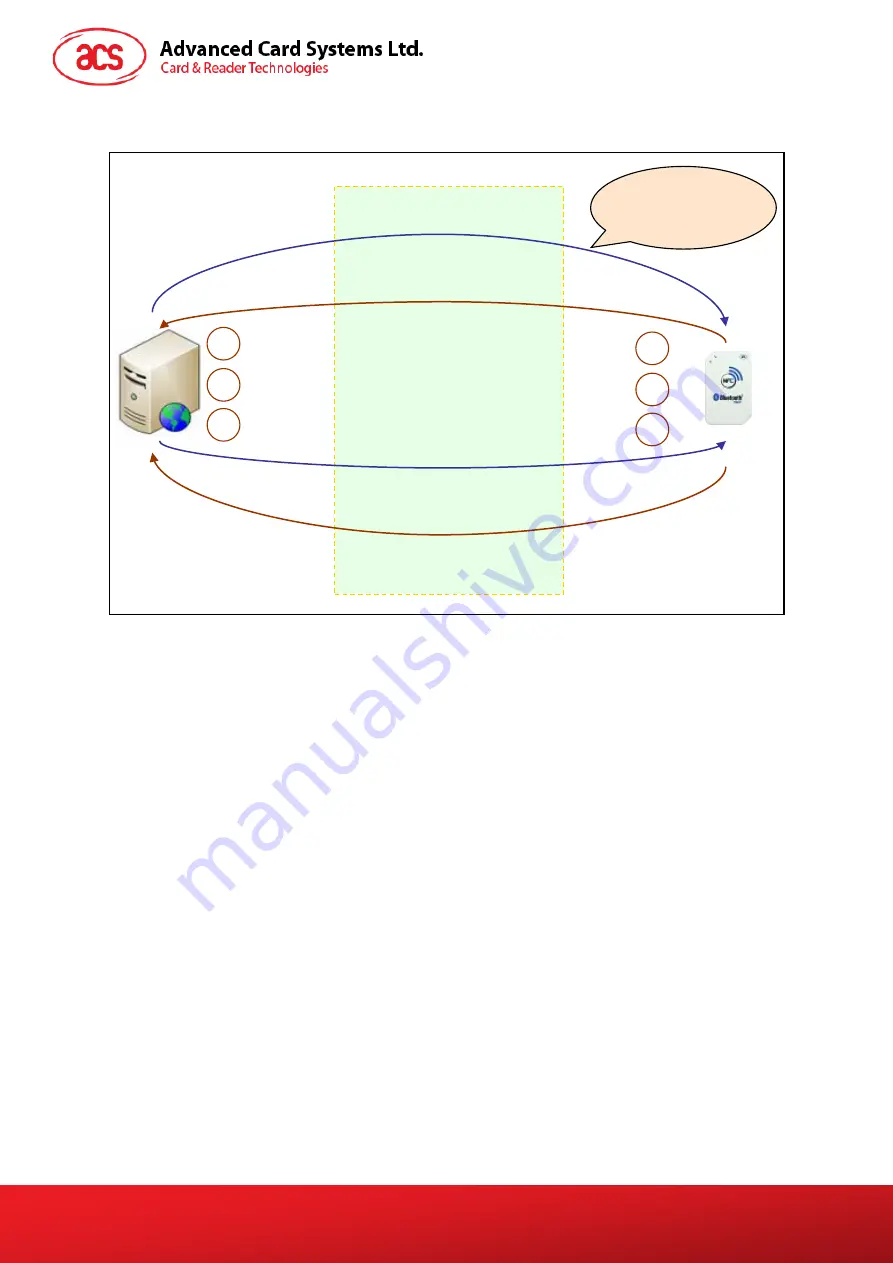
ACR1255U-J1 – Reference Manual
Version V1.01
www.acs.com.hk
Page 18 of 73
For better illustration, please refer to figure below (the picture below has omitted the bridging device
for simplicity and better illustration):
Figure 7
: Authentication Procedure
Below is a summary of the above mentioned steps:
1. The data processing server/bridging device initiates an authentication request from
ACR1255U-J1 by issuing an authentication request message.
2. Upon receiving the authentication request message, ACR1255U-J1 will generate 16 bytes of
random numbers (RND_A[0:15]). The whole 16 bytes of data is encrypted with the Customer
Master Key currently being used by ACR1255U-J1.
3. The encrypted version of RND_A[0:15] is then transferred to the data processing server
through the answer to the authentication response message.
4. The data processing server will decrypt the data received to recover RND_A[0:15].
5. The data processing server will generate another 16 bytes of random numbers (RND_B[0:15]).
RND_A[0:15] will be padded to the end of RND_B[0:15] to form a sequence of 32-byte
random numbers (RND_C[0:31] = RND_B[0:15] + RND_A[0:15]). All the 32 bytes of random
numbers will undergo a decryption process with the Customer Master Key currently being
used in the server.
6. The final output data from the encryption process will be transferred to ACR1255U-J1 through
the authentication response message.
7. In ACR1255U-J1, an encryption process will be performed on the received data to recover the
32 bytes of random number. ACR1255U-J1 will check the result RND_A[0:15] to see if they
are the same as the original ones. If not, the authentication process will be terminated.
8. ACR1255U-J1 will encrypt the resultant RND_B[0:15] with the Customer Master Key. At the
same time, a 16-byte Session Key is created by padding the first 8 bytes of RND_B to the end
of the first 8 bytes of RND_A.
1. Send authentication
request message
3. Answer to the request
message
2
6. Send authentication
response message
7
8
9. Answer to the
authentication response
message
4
5
10
Transmitted
through the
bridging device






























